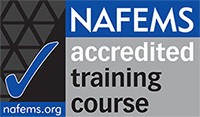The solid mechanics modular courses are designed to cover many of the topics covered in the NAFEMS PSE competencies. However, it should be noted that the modular courses will be focused on the understanding of solid mechanics theories used in engineering and design, rather than topics that address FE simulations. The relevant PSE competency Technical Areas partially covered by the solid Mechanics courses are: •Core Finite Element Analysis •Mechanics, Elasticity and Strength of Materials •Materials for Analysis and Simulation •Flaw Assessment and Fracture Mechanics •Nonlinear Geometric Effects and Contact •Beams, Membranes, Plates and Shells •Dynamics and Vibration •Plasticity •Thermo-Mechanical Behaviour •Buckling and Instability •Composite Materials and Structures •Creep and Time-Dependency | 


